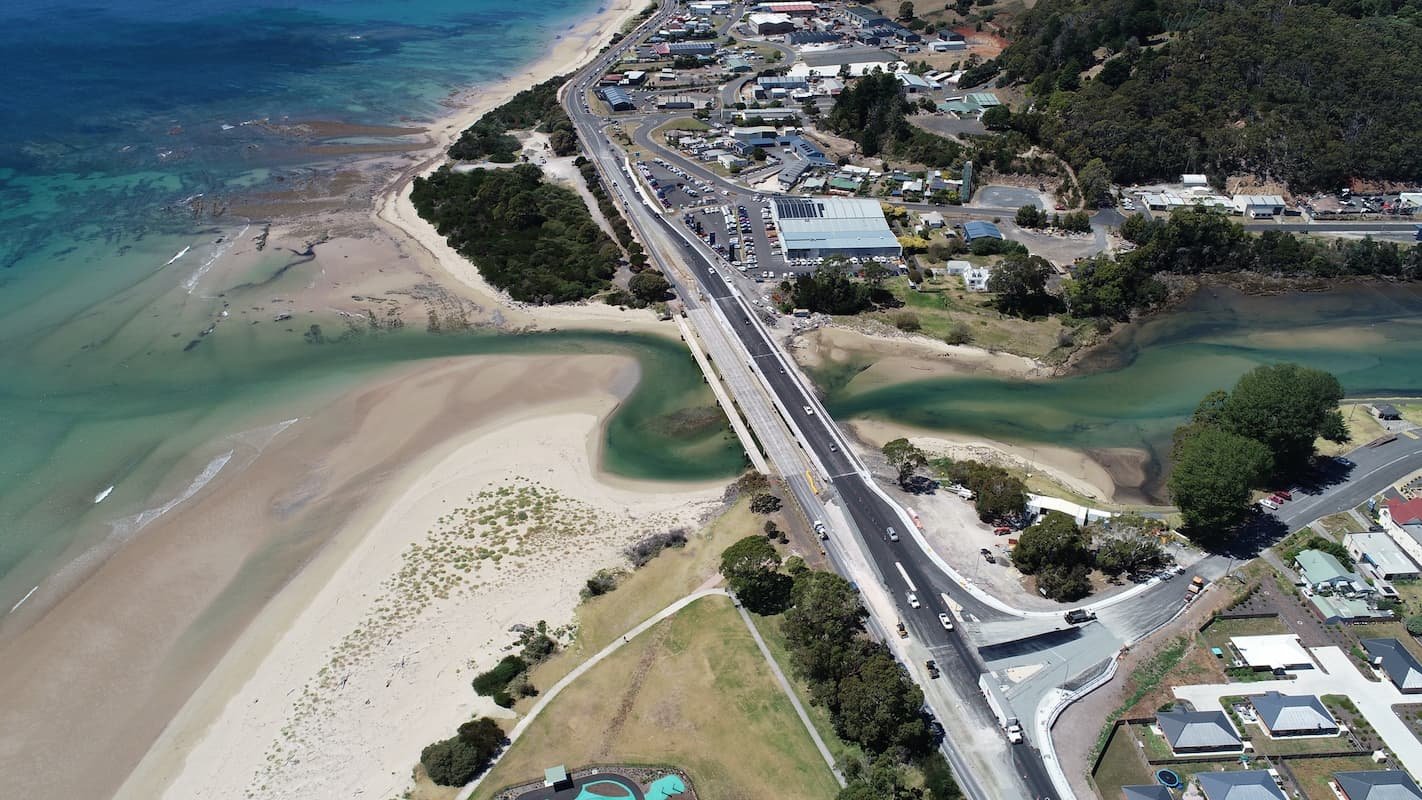
In October 2022, significant flooding in Tasmania’s north-west caused structural damage to the Cam River Bridge on the Bass Highway - a critical transport corridor. A visible sag of the girders at a central pier was reported and an underwater investigation revealed the floodwaters had undermined a central pier, raising concerns about the stability and safety under live traffic loading.
The sudden lane reduction caused extensive traffic delays, with some motorists experiencing hours-long commutes. The bridge’s compromised state raised serious concerns about public safety and the continuity of essential and emergency services. The local government and state agencies were under pressure to rapidly determine whether the structure could safely carry traffic or require full closure.
The Challenge
Traditional assessment approaches of inspections and numerical modelling are time-consuming, error prone and may not provide sufficient confidence under high public and operational pressure. In this case, numerical modelling was used initially, but stakeholders required definitive load-testing data to confirm remedial works.
Load-testing bridges can be complex and expensive. Traditionally reliance on subjective evaluations due to the lack of accessible, real-time load-response data leads to conservative, costly decisions, as asset owners and engineers, without definitive data to guide them must ensure that industry standards are met.
There was a clear need high-quality data to support engineering judgement and inform risk-based decision making.
Tasmanian Bridge Remedial Works
The Solution
Pitt and Sherry, the consulting engineers engaged, proposed the use of Viotel’s real-time remote monitoring system to provide direct insight into the bridge’s behaviour under load.
Viotel’s triaxial tiltmeters were quickly deployed to the upstream face of the bridge beams and affected pier. These sensors streamed data to the myViotel dashboard accessible by the engineering team, asset owners and road authorities, enabling immediate observation of structural response to live loads.
Three controlled load tests were undertaking using water and freight trucks positioned over the damaged pier:
Test A: A 24-tonne water truck was stationed for 10 minutes, repeated twice
Test B: A 68-tonne truck was stationed for 10minutes, repeated three times
Test C: Both vehicles were positioned above the pier simultaneously for a dual-lane scenario.
Their 0.001-degree sensitivity could detect movements as slight as 0.3mm. Deflections were observed on the girders during loading and returned to the baseline once the loads were removed. No permanent vertical or lateral displacements were measured. No lateral movement was recorded by the pier mounted tiltmeter during the load tests.
This quantitative evidence confirmed that the bridge structure had retained sufficient integrity and stiffness to safely carry traffic while the emergent remedial works were carried out.
The data showed no permanent vertical or lateral movements, confirming the success of the remedial works. This allowed the bridge to be safely reopened to traffic. An ongoing monitoring system was also implemented to ensure long-term structural health. This system, via the myViotel Dashboard also identified secondary issues like loose expansion joints, aiding heavy vehicle route planning.
Key Benefits
The integration of Viotel’s real-time monitoring system into the Cam River Bridge assessment delivered measurable advantages across technical, operational, and stakeholder dimensions. The data provided directly influenced the speed, safety, and quality of decision making under constrained conditions, Key outcomes included;
Rapid Deployment
Viotel’s system was installed within an hour, allowing near-immediate data collection.
Improved Safety for the Inspectors and Engineers
Remote monitoring reduced personnel exposure to physical hazards by eliminating the need for personnel to conduct extensive inspections around the compromised structure during load testing.
Data-Driven Confidence
The real-time, high resolution data supported the engineering team’s assessment., providing defensible evidence to inform stakeholder decisions.
Minimised Disruption
The council was able to reopen the bridge to full traffic flow shortly after load testing, avoiding significant regional economic impact.
Ongoing Monitoring
The tiltmeters remained in place enabling continued oversight during the remedial works and assurance in the months following
Bridge load capacity assessments, necessary to facilitate heavy vehicle transport route planning, have left many asset owners/managers facing bridge strengthening costs in the $10’s of millions. Many bridges, like the Cam River Bridge in Tasmania where Viotel conducted load-testing, face these challenges. For asset owners managing critical infrastructure, Viotel’s solution offers a smarter, more efficient way to monitor bridges. By delivering precise, real-time data, we help you make informed decisions, reduce costs, and ensure the safety of your assets.








